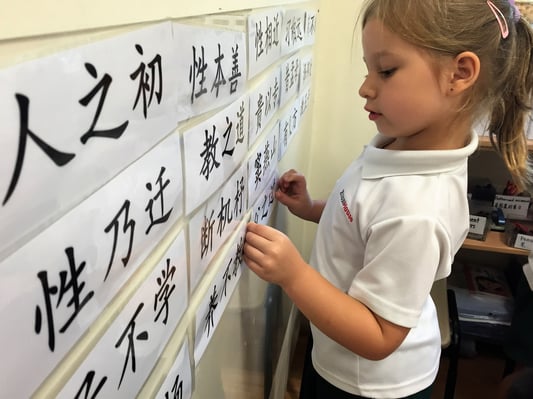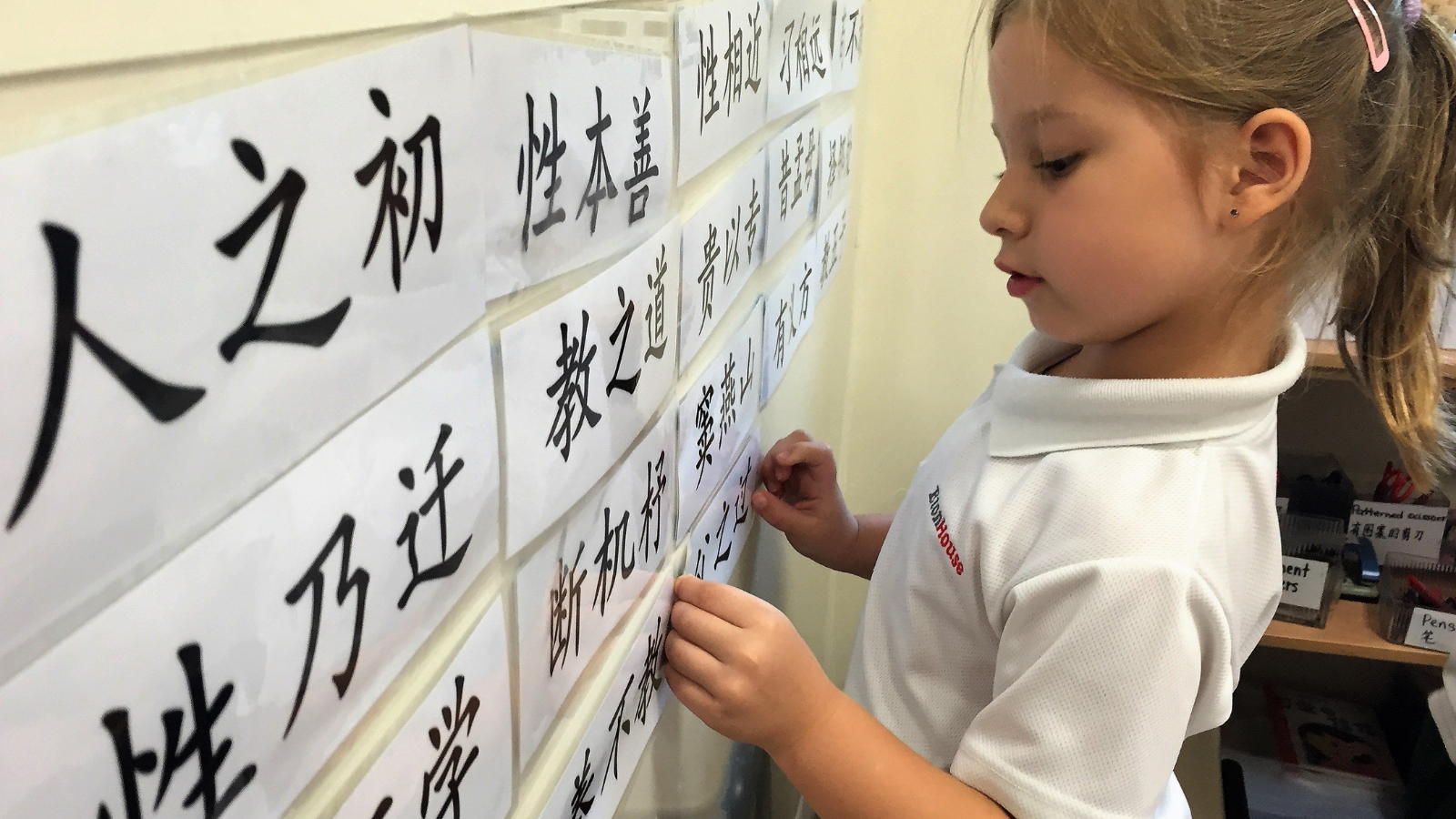Research findings indicate that the early years are the best time to learn a new language. What does this mean for parents, especially for the majority of Singaporean parents whose children are expected to be well-versed in both English and Mandarin when they start formal schooling?What if your child doesn’t show an interest in Mandarin, or worse, resists the idea of learning Mandarin? What if your command of the Mandarin language isn’t as strong as you’d like and you’re worried about imparting the wrong information? What if you don’t know the language yourself?
Take heart that nothing is impossible and that there are ways you can help your child nurture an interest in Mandarin even when it seems like an uphill battle.
Show them how Mandarin is used in daily life 
When you’re out and about, point out Chinese words and explain what the words mean. Whether it’s a road sign, an item on a menu or a flyer you’ve been given – it’s a good opportunity for your child to realise that Mandarin is all around us and why it’s important for them to understand the language. If you’re not an expert in Mandarin, it’s time to harness technology! An app like Pleco is an English to Chinese (and vice versa) dictionary that tells you the meaning of each Mandarin word and teaches you how to pronounce it.
Even though English is the official language in Singapore, Mandarin is still widely used. Lead by example and try conversing in Mandarin whenever you can. It can be a ‘thank you’ at the checkout counters, asking for a glass of water while in a restaurant or even a simple greeting to a neighbour. By showing how speaking Mandarin can help to break barriers, you can open your child’s eyes to see how we can better connect with the people we encounter.
Teach them the meaning behind Chinese words
Learning to recognise Chinese words can be daunting. After all, you won’t be able to phonetically guess how to pronounce a new word if you’ve never learned it before! Instead, why not try and tell a story behind some basic Chinese words to help your little ones identify better with the language? Being able to connect with the words through imagery could help children be more interested. Here are some examples:
口 kǒu - The Chinese character for mouth resembles an open mouth.
人 rén - The Chinese word for person almost looks like a stick figure with two legs.
门 mén - The Chinese character for door looks like a doorframe.

Chinese characters are also made up of different graphical components called radicals, which give meaning to genres of words. Knowing the context in which some common radicals are used could help children make a connection between the numerous Chinese words and grow their understanding of the language.
氵- This radical usually means the word relates to water or flow
犭- Mandarin characters that contain this radical are commonly associated with animals
子 - Words with this radical denote that it’s related to children
Helping your child make sense of all these new words they’re learning can help to grow their confidence and interest.
Use technology to your advantage
We are fortunate to be living in a time where technology is so advanced that there are digital learning aids available for parents to use if they choose to, such as:
- Digital readers - There are books available that work together with a special reader pen. Children can tap the pen to a specific word on a page and have the word read aloud. The interactive aspect of this activity will keep children engaged and as they read along together with the pen, they’ll grow more familiar and comfortable with the language.
- Videos - Which child doesn’t like watching cartoons? They’re colourful, funny and interesting to watch, so why not have your child watch Mandarin cartoons once in a while? It doesn’t need to be a lengthy episode, but short clips that you can easily find on YouTube. Or you play his / her favorite Disney cartoon movie and simply set the language to Mandarin.
- Apps for tablets and smartphones - Apart from dictionary apps like Pleco, there is a whole host of Mandarin learning apps for you to choose from. It could be a Chinese word game or an interactive game with characters speaking in Mandarin. As long as it piques your child’s interest and you are there to monitor and regular their mobile/tablet usage, apps can be a very useful learning tool for your kids.
These are just some of the ways to pique the little one’s interest in learning Mandarin. Give some of these suggestions a try, and turn your child’s struggles with Mandarin into fun, learning opportunities!


-1.png)
